Clara Grant the Bundle Woman of Bow
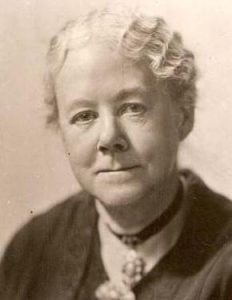 East End legend and Bow resident, Clara Grant’s Farthing Bundles helped put a smile on the face of thousands of East End children through the tough times of the Depression and two World Wars. But not many know about Grant’s other pioneering social initiatives that still operate to this day.
East End legend and Bow resident, Clara Grant’s Farthing Bundles helped put a smile on the face of thousands of East End children through the tough times of the Depression and two World Wars. But not many know about Grant’s other pioneering social initiatives that still operate to this day.
Of course, Bow is no stranger to pioneering women. Perhaps the most famous is Sylvia Pankhurst whose East London Federation of Suffragettes, Mothers Arms and Toy Factory on Norman Grove providing the country’s first ever work crèche, were all based a few hundred yards of Roman Road back in the 1910s.
Lesser known but no less pioneering, local head teacher Clara Grant dedicated her life to tackling child poverty. While her farthing bundles led to her moniker of The Bundle Woman of Bow, Clara Grant set up several pioneering initiatives that continue to this day including the Clara Grant Primary School; the Fern Street Settlement; breakfast clubs for poor children; free library for poor families and health home visits.
Clara Grant’s Fern Street Settlement
As headmistress of Devons Road Infant School (now Clara Grant Primary School), Clara was motivated by her Christian faith to address the poverty and deprivation that blighted the lives of her young pupils in Bromley-by-Bow.
At a time when one in five children in the East End didn’t reach their first birthday, most of the children lacked the basics such a food, shoes and even water. Clara Grant saw that the children also lacked something else. She saw that children needed to play.
In 1907 she set up a community initiative called the Fern Street Settlement to help raise the family’s standard of living and to give the children something to play with.
The Fern Street Settlement still operates to this day. It is run by All Hallows Bow Church and offers children’s activities, family learning, advice, support, and community action projects.
One Show visits Clara Grant’s Fern Street Settlement [VIDEO]
Television presenter and freelance historian of the early modern period Ruth Goodman travelled to Bow for the One Show to learn about Clara Grant, the woman who helped brighten the lives of children in the 1900s with bundles of homemade toys. In this video Goodman recreates the ceremony with current schoolchildren and speaks to some of the original recipients of the bundles from the 1950s.
Clara Grant’s Farthing bundles
Clara Grant decided from the beginning to give away gifts in the form of ‘farthing bundles’ during a weekly ceremony where children were given a bundle of gifts in exchange of a farthing, the smallest coin in circulation at the time.
This nominal payment was a deliberate policy by Clara who believed that paying gave those receiving them, however young, a feeling of self-respect, and even the right to complain if the items were not up to standard.
Grant was inspired to turn everyday objects into toys that were kept in a case in her living room. These included a piece of firewood wrapped in newspaper which became a doll and old stockings tied with string which become cricket balls.
‘Farthing bundles are full of very human things such as children love’ said Grant. ‘Tiny toys of wood, or tin, whole or broken, little balls, doll-less heads or head-less dolls, whistles, shells, beads, reels, marbles, fancy boxes, decorated pill boxes, scraps of patchwork, odds and ends of silk or wool, coloured paper for dressing up, cigarette cards and scraps.’
The farthing bundle ceremony continued right through the Depression of the 1930s, through the Second World War and into the 1960s, years after her death.
Clara Grant Arch
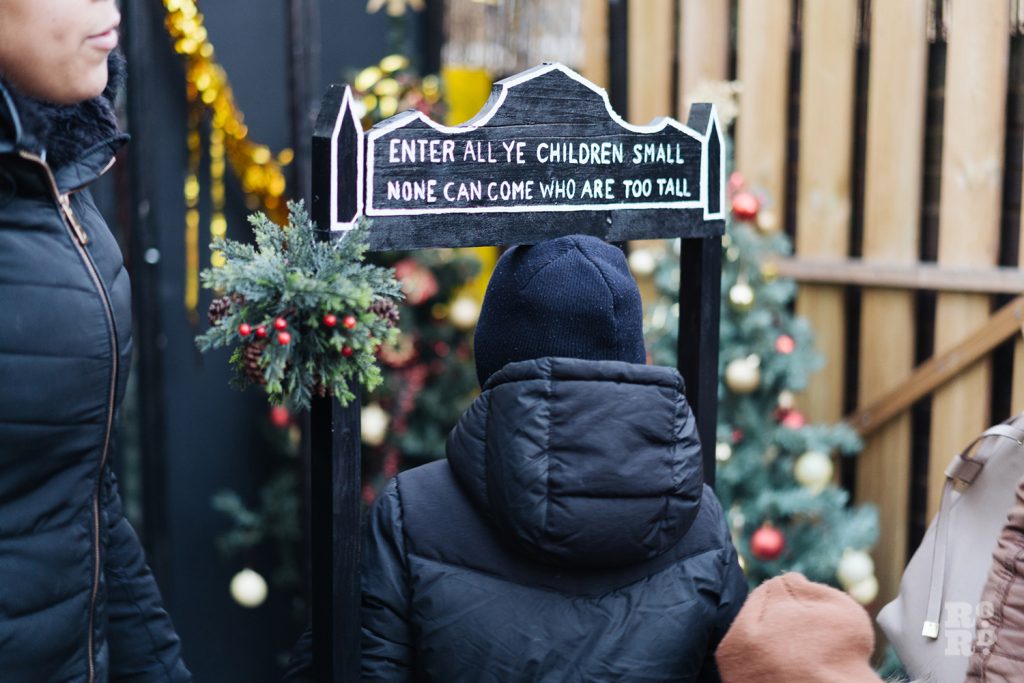
The weekly ceremony soon became hugely popular, attracting up to 500 children who would line up in Fern Street from as early as 6am to receive their bundle.
To control the numbers and ensure the youngest were prioritised, Clara Grant created an arch through which children had to step to receive the bundles. The arch bore the words Enter Now Ye Children Small; None Can Come Who Are Too Tall. If the child could pass through without bending, they would pay a farthing and receive a bundle.
Recently the Clara Grant Arch was recreated for the children of Bow. In 2016 local community development organisation Roman Road Trust in partnership with Clara Grant Primary School, created a replica the Clara Grant Arch, pictured here. It was used to shepherd children into the Santa’s Grotto ensuring the youngest children received there free bundles of toys from Santa’s sack.
Clara Grant: breakfast clubs, health visits, libraries
Clara Grant is best known for her farthing bundles, but she dedicated her life to alleviating child poverty and led several pioneering social initiatives that are still used to this day.
Grant became head teacher in 1900 of the infant’s school in Devon’s Road in Bromley-by-Bow. At this school Grant organised hot breakfasts for her young pupils, paying for porridge, milk, bread and butter.
As far back as 1908, the settlement linked up with the Voluntary Health Visiting Association. A worker and nurse would visit every baby born to families in the area once a month for a year who were connected to Devon’s Road School.
The Settlement also had a library for adults and children, various classes in crafts including book binding and a work fund.
Clara Grant commemorated
During her life Grant’s work was well-known even in Royal circles. Queen Mary came to the East End to visit the settlement, then regularly sent her old greetings cards to be reused in the bundles.
Clara Grant received an OBE in 1949, when she was 81, from King George VI. She would die a few months later aged 82 and be buried nearby in Tower Hamlets Cemetery at Mile End.
The school she headed was renamed the Clara Grant Primary school. There is also a Clara Grant House in Mellish Street, on the Isle of Dogs.
Clara’s Grant’s Farthing Bundles inspired Mary Crockett to write a book of the same name. This is a story about a young girl, a secret attic, a lost doll and, of course, orphans.
In 2014 Clara Grant was recognised by the London Borough of Tower Hamlets for all her work and a purple People’s Plaque was placed on the wall outside the Settlement in Fern Street.
Michael Peet, former Rector of Bow, has authored Clara Grant: The Farthing Bundle Lady of Bow. It is available from Bow Church for £2, or contact Rev Debbie Frazer at Bow Church on 020 8981 7916 to arrange postage.
Clara Grant died in 1950 and is buried at Tower Hamlets Cemetery in Mile End. Her gravestone is in the shape of an open book. Have you seen it?

‘It so happens that I, a little school ma’am, have been responsible for the work throughout—I have been merely the agent through whom a splendid band of helpers, a sympathetic council and a vast, almost worldwide army of friends and supporters’ have been enabled to befriend one of the poorest districts in London.
‘To me has fallen the happy task of sharing their gifts among our people. There is nothing so embarrassing as wearing as an ill-fitting halo—but a life one would not change for any other.’
Clara Grant, 1868-1950

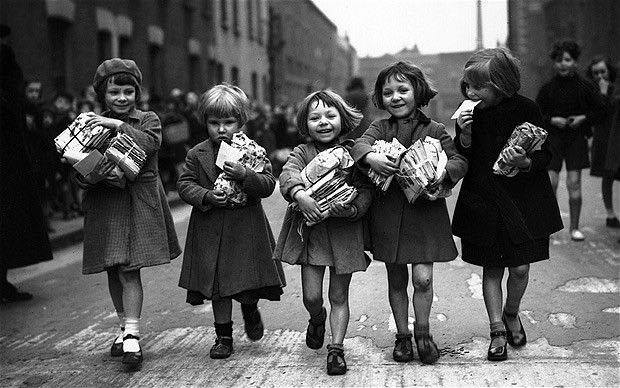
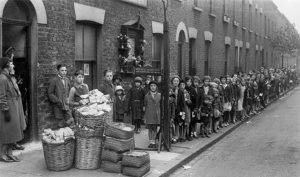
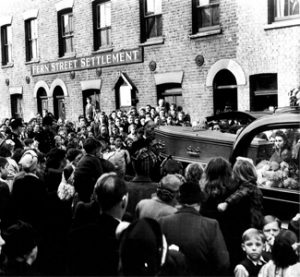

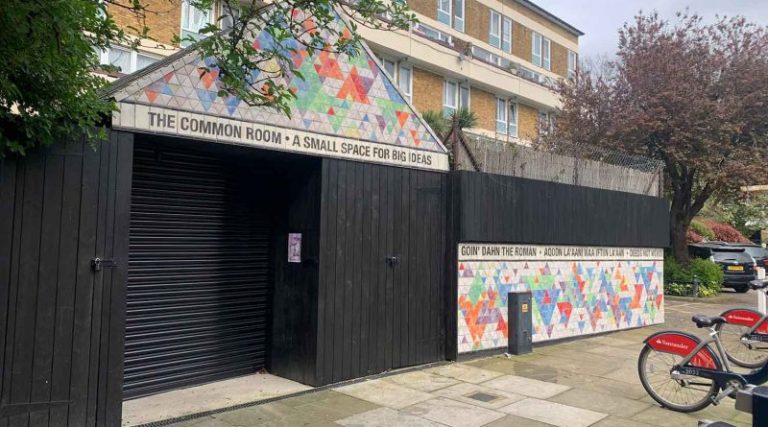
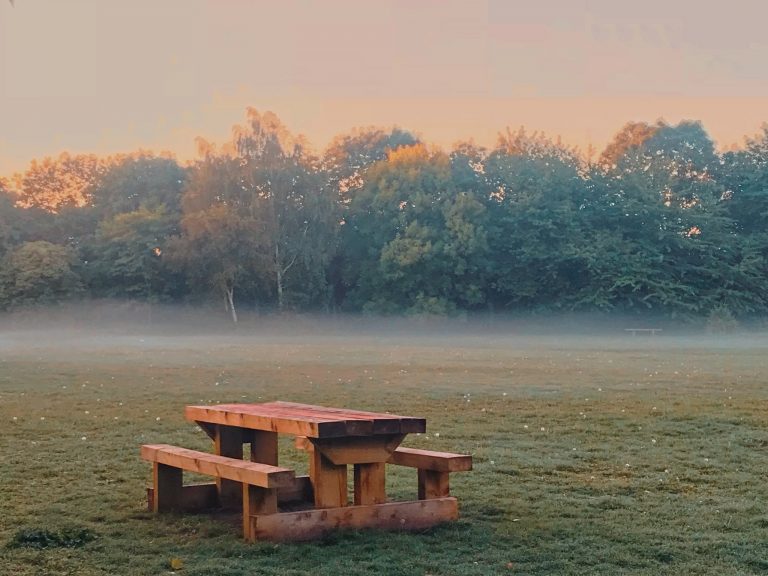
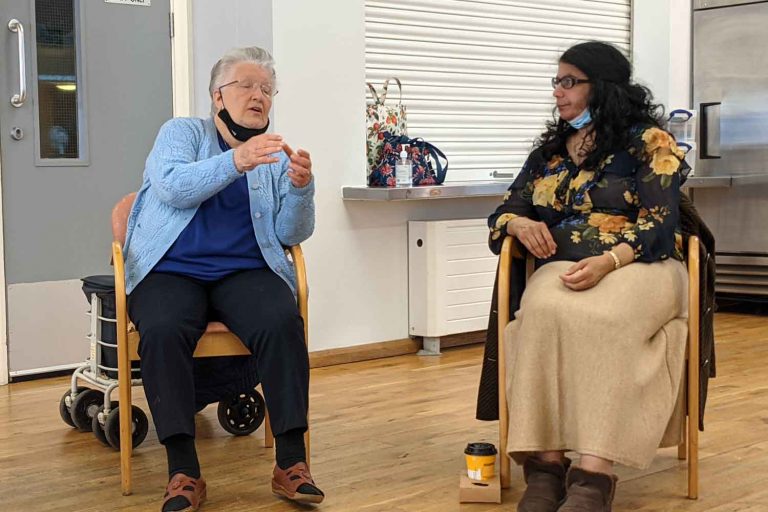

I still have one of the gifts I received in my farthing bundle, although by 1965 the cost had increased to a penny. It is a beautifully decorated small cow bell depicting a tranquil rural scene. I still treasure it 56 years later.